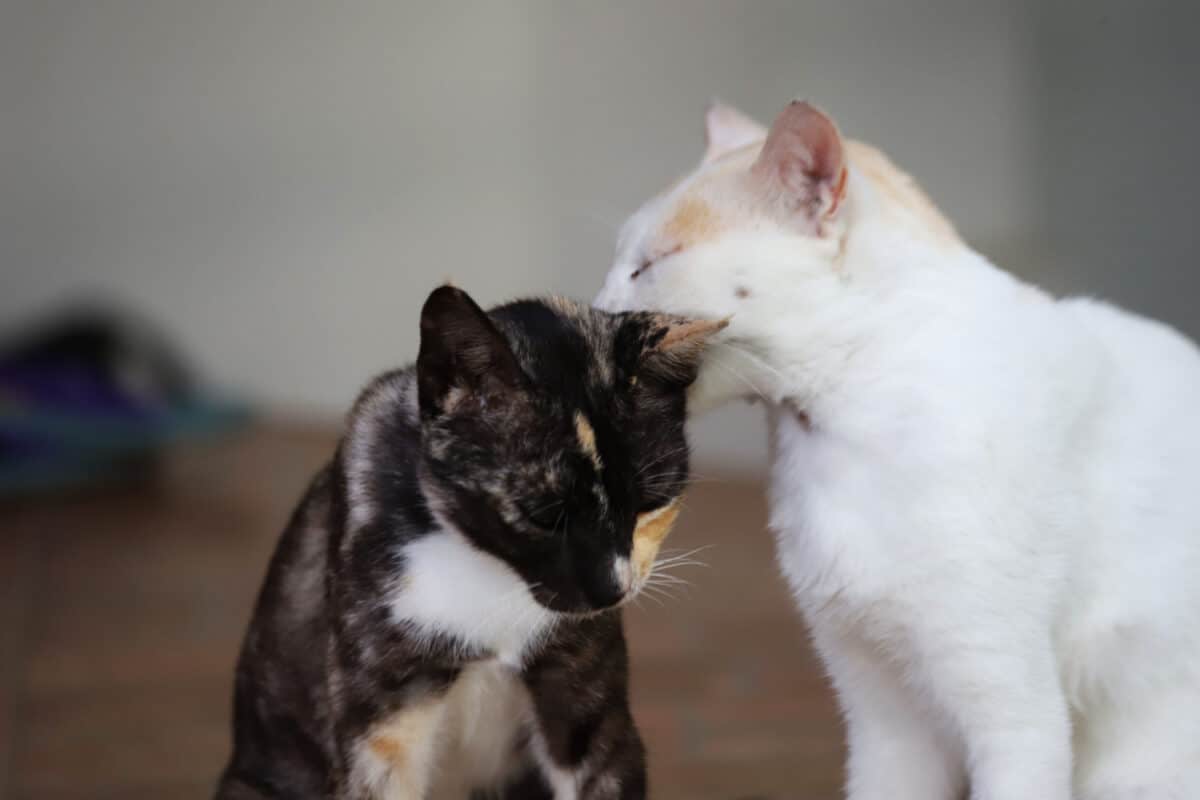You're lounging at home, watching your cat prance around with joy. You're filled with warmth and think, 'Why not double this happiness?' So, you decide to introduce another fluffy companion into your household. But where do you start when introducing cats to cats? How do you ensure harmony in your cat-filled paradise?
In this comprehensive guide, we'll navigate the dos and don'ts of introducing cats to each other. We'll discuss essential steps like veterinary checkups, creating a safe space, and a tried-and-true blanket trick that eases introductions. We'll also cover warning signs to watch out for that could indicate potential conflicts.
This guide will walk you through the initial idea of adoption, through a step-by-step process of integration, to ultimately cohabitating peacefully with multiple cats. Stick with us and get ready to successfully open your home to another bundle of whiskers. Remember, it's not just about adding another cat; it's about expanding your family.
So, what's the first thing you need to do after bringing home a new cat? Let's find out!

New Cat's Health and Safety: First Steps
Let's start with an interactive game on the scent-infused blanket. Use a feather or a string to get your new cat fully engaged. The goal is to cover the blanket with the new cat's scent. After a few days, move the blanket to a spot your resident cat frequents.
Observing Your Resident Cat's Response
As your resident cat approaches the blanket, watch their body language. Normal responses include sniffing, pawing, or even a little growling. However, if you spot signs like flattened ears, a twitching tail, or hissing, be prepared. These warning signs might hint at some conflict when the cats first meet.
Let your resident cat interact with the blanket as they wish for a few days. Engage them in play on the blanket and even rub it on them. Now, the blanket is not just carrying the scent of the newcomer, but a blend of both.
Introducing the Blanket Back to the New Cat
Once again, bring the blanket back to the new cat without washing it. Yes, it might be a little dirty by now. The new cat should spend another day or so with the blanket. Observe their reactions, looking out for any warning signs.
The Blanket Under the Door: Final Step
Next, if the blanket is small enough, lay it flat under the door separating the two cats. Both cats will have access to the blanket from their respective sides. Now, they can smell each other through the gap in the door, with the blended scents on the blanket adding to their sensory experience.
Place some treats on the blanket to create positive associations with each other's scents.
The Final Test: Observing Their Reactions
Watch their reactions closely. If there's no sign of a potential cat fight, it's a positive signal. You might even sprinkle some catnip along the door's gap on top of the blanket. This can encourage both cats to relax and play, even though they're still separated.
If all goes well, your cats are ready for their first face-to-face meeting. We'll discuss the ideal way to supervise this meeting in the next section. Stay tuned!
SIGN UP FOR THECATSITE'S EMAIL UPDATES >
The Big Event: Supervised First Meet-up
It's time for the highly anticipated first meeting. This moment should be under watchful eyes. If possible, have more than one person present to supervise this encounter. Keep a heavy towel or blanket nearby. You might need it to separate the cats if a fight breaks out. Open the door and let the two meet nose to nose.
Initial Reactions: What to Expect
If you've followed all the steps and resisted the urge to rush, you'll likely witness a few initial hisses, but nothing more severe. Keep an eye on both cats during this first hour. You might be pleasantly surprised to find them curled up together on your bed, taking a peaceful nap.

Bonding with the New Cat: Spend Time Together
While your new cat remains in isolation, make it a point to visit them regularly. Just sit with them on the floor. I have a tradition of reading aloud to my new pets. I spend about 10 minutes each day reading in a soft voice. This habit helps them grow accustomed to my voice.
Making Your Scent Familiar
In addition to this, I also leave an old t-shirt I've exercised in with the new cat. This tactic allows the newcomer to get familiar with my scent.
Dealing with Shyness: Have Patience
If your new cat hides from you in the early days, don't worry. They're just trying to adjust to their new surroundings. A bit of patience goes a long way.
Soothing Techniques for Scared Cats
If they seem particularly scared, you can help them relax. Play some classical music at a low volume or use a ticking alarm clock wrapped in a towel. Placing this near their sleeping spot can mimic the comforting rhythm of their mother's heartbeat, helping them adjust more quickly.
Wrapping Up: Success Lies in Patience
Over the years, I have repeatedly implemented this approach, reaping tremendous success. It isn't a quick-fix strategy but a thorough and effective one, capable of preventing most issues before they even begin. As long as you balance your time between both cats, ensuring neither feels neglected, this method will not let you down. It hasn't failed me yet. Let's quickly recap the crucial steps:
- Vet visits before letting the two cats even sniff their noses.
- Isolation for the newcomer supplying two litter boxes, food bowls, and water dish toys.
- Visit the newcomer often sit on the floor and read out loud softly.
- If kitty hides, just accept it, she will come out to you eventually, don't chase her.
- To soothe the newcomer use the alarm clock trick, and play classical music.
- Use the blanket trick, it really works and makes that initial first meeting less stressful for everyone.
- Add an old tee shirt that you got really sweaty to the newcomer's room.
- The first meeting has help and a blanket or heavy towel at the ready to toss over any aggressive kitty.
- Don't neglect either cat during the isolation period. Interactive playtime between both of them and yourself is very important.
SIGN UP FOR THECATSITE'S EMAIL UPDATES >
We have a more recent and thorough article on the topic. If you're dealing with introducing cats make sure you check out this guide too:
How To Successfully Introduce Cats: The Ultimate Guide
Good luck and thank you for bringing yet another cat or kitten home to love.
Read more: multi-cat-household
Written by Mary Anne Miller

Mary Anne Miller is a freelance writer and member of the Cat Writers' Association. She is a web copywriter, and passionate about feral cats/kittens and bottle babies. You can read more by Mary Anne on her Feral Cat Behavior Blog.
Comments? Leave them using the form below. Questions? Please use the cat forums for those!
Note: We may get commissions for purchases made through links on this page.




9 comments on “Introducing Cats To Cats: The Expert’s Guide To A Smooth Transition”